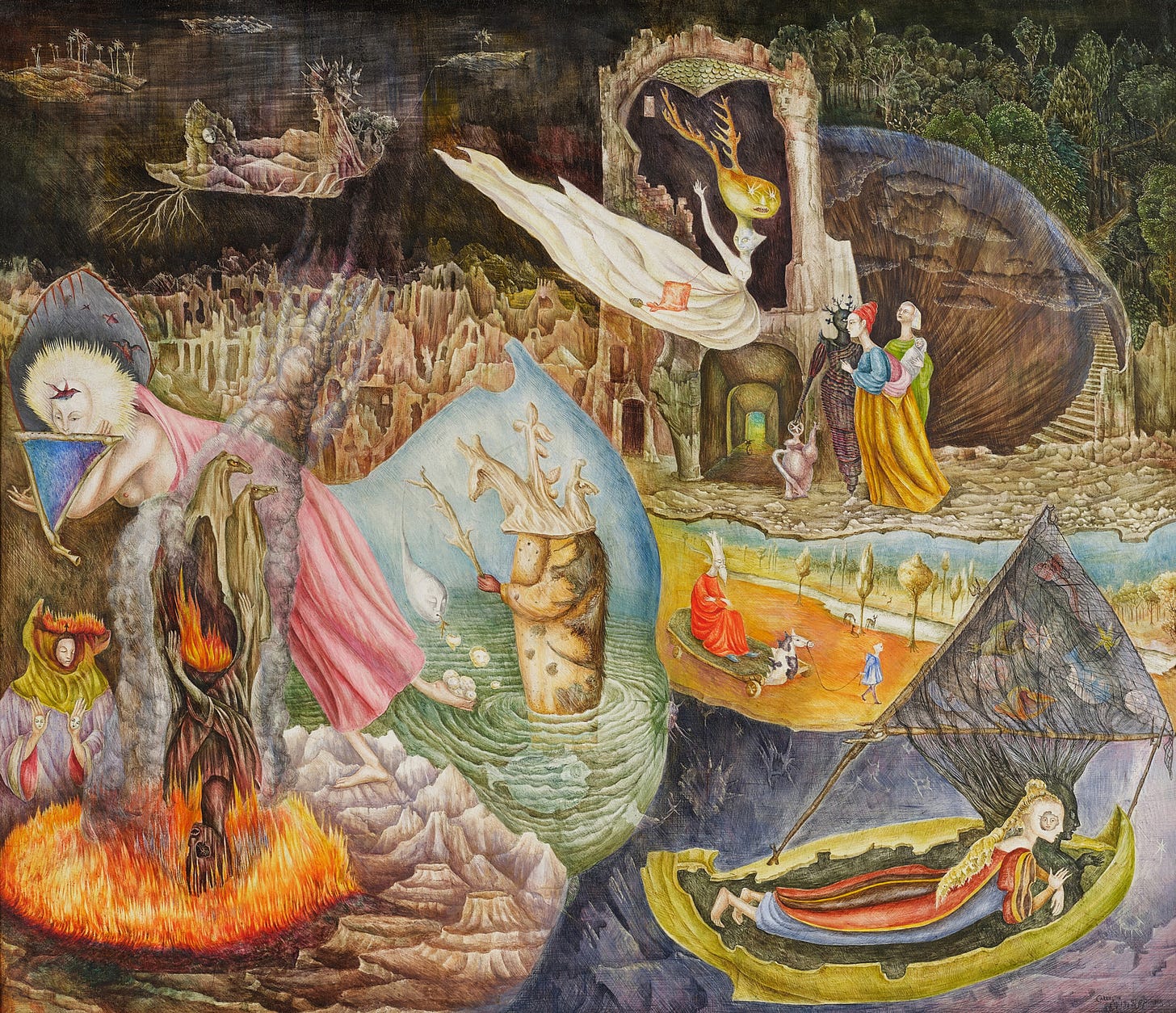Work by Surrealist Leonora Carrington, “Les Distractions de Dagobert," Sells at Auction During Bidding War for a Record $24.5m at Sotheby’s New York; Live Video Thursday, May 16, 2024
Watch Live Auction in New York from Thursday's Exhilarating Bidding War
“Les Distractions de Dagobert,” by Leonora Carrington. This exquisite painting sold Thursday, May 16 in New York at Sotheby’s Auction House for a record $24.5m.
The English-born writer and artist Leonora Carrington was born in Clayton Green, Chorley, Lancashire, England in 1917. The last surviving member of the surrealist movement of the 1930s, who was part of the inner circle of artists including Frida Kahlo, Salvador Dali, Pablo Picasso, Diego Rivera, et al; she died in 2011 in Mexico City. She spent most of her life in the Roma Norte district in Mexico City, living eight and a half miles from Frida Kahlo’s family mansion Casa Azul in the charming Coyoacan neighborhood.
Rebellious by nature and kicked out of her school in England, she was sent by her parents to Florence to attend Mrs. Penrose’s Academy of Art. She was ten years old when she saw her first surrealist painting in a Left Bank gallery in Paris, having a profound effect on her and influencing her decision to commit to life in the arts. Her mother supported her decision and her father discouraged it instead presenting her at Royal Court. Rather than “being sold to the highest bidder,” as she had stated, she brought a copy of Aldous Huxley’s novel Eyeless in Gaza (1936) spending her time at Court reading what is considered Huxley’s finest novel. Carrington expanded her interest in reading and in surrealism by reading Herbert Read’s Surrealism (1936). Carrington went on to write many novels in the surrealist vein and practiced automatic writing—a style to access the uninhibited unconscious mind.
Here’s the exhilarating live auction at Sotheby’s Auction House New York:
In 1936, she discovered the work of Dadaist Max Ernst, who later went into a career as a surrealist artist. Carrington met Ernst the next year at a party in London, where the two bonded and together went to live in Paris. The next year they left Paris and settled in Saint Martin d’Ardeche in Southern France. There, Carrington began work in sculpture, first creating works of guardian animals; Ernst produced The Triumph of Love, which depicted the two in ambivalent surrealist expression highlighted by bright colors. When the Nazis invaded France, Ernst was arrested for being a degenerate; Ernst managed to escape and fled to the United States with the help of Peggy Guggenheim, a vigorous sponsor of the arts.
Max Ernst, The Triumph of Love (1937), on view at The Getty Museum Los Angeles.





